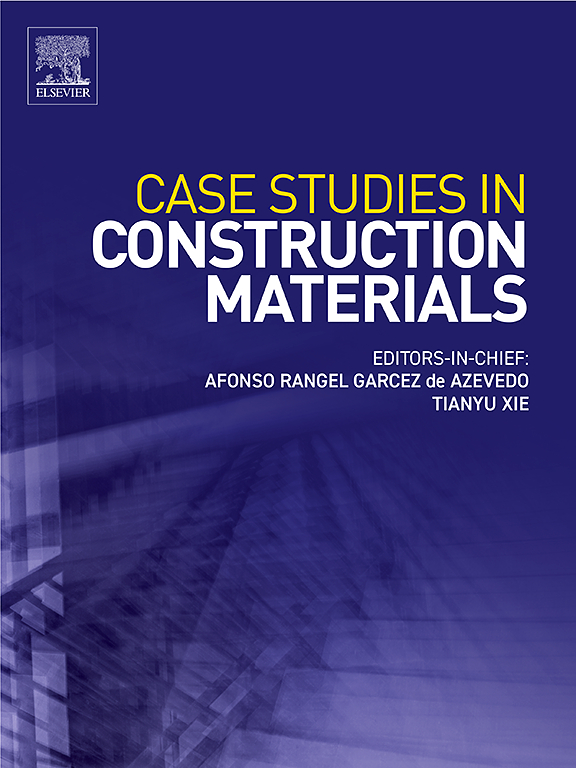水泥掺合用稻壳灰热机械处理优化
IF 6.5
2区 工程技术
Q1 CONSTRUCTION & BUILDING TECHNOLOGY
引用次数: 0
摘要
稻壳灰(RHA)通常被认为是一种很有前途的混凝土水泥替代品;然而,由于过量的未燃烧碳和多孔结构,通过不受控制的燃烧获得的RHA往往表现出有限的火山灰活性。本研究探讨了微观结构对燃烧过程的影响,以提高RHA性能,降低胶结剂中的水泥含量。在不同的温度和时间下,对粗粒RHA和细粒RHA进行了燃烧,并利用粒径分布(PSD)、扫描电子显微镜(SEM)、燃失量(LOI)、x射线衍射(XRD)和荧光(XRF)研究了它们的性能。对掺入RHA作为水泥替代品的砂浆的火山灰活性指数和水化热进行了研究。结果表明,在低于800℃的温度下,材料的XRD分析证实了RHA的微观结构对燃烧过程中二氧化硅性能的影响很小。然而,在PSD、SEM、LOI、XRF、水化热和火山灰活性方面观察到明显的变化,表明燃烧粗粒RHA比燃烧细粒RHA对燃烧效率有更有利的影响。这突出了有效燃烧策略的重要性,将残余RHA转化为有效的补充胶凝材料(SCM)。本文章由计算机程序翻译,如有差异,请以英文原文为准。
Optimising thermo-mechanical treatments of residual rice husk ash for cement blending
Rice husk ash (RHA) is commonly considered a promising cement replacement in concrete; however, RHA obtained through uncontrolled combustion often exhibits limited pozzolanic activity due to excess unburnt carbon and a porous structure. This study investigates the effect of microstructure on the burning process for enhancing RHA properties and reducing cement content in the binder. Coarse RHA and finely ground RHA were subjected to burning at various temperatures and durations, with Particle size distribution (PSD), Scanning electron microscopy (SEM), Loss of ignition (LOI), X-ray diffraction (XRD) and fluorescence (XRF) used to investigate their properties. The pozzolanic activity index and heat of hydration were examined in mortars incorporating RHA as a cement replacement. The results demonstrated that the microstructure of RHA had a marginal effect on silica properties during the burning process, as confirmed by XRD analysis of the materials at temperatures below 800 °C. Nevertheless, noticeable variations were observed in PSD, SEM, LOI, XRF, heat of hydration, and pozzolanic activity, indicating that burning coarse RHA had more beneficial effect on combustion efficiency compared to burning finely ground RHA. This highlights the importance of an effective combustion strategy to transform residual RHA into a potent supplementary cementitious material (SCM).
求助全文
通过发布文献求助,成功后即可免费获取论文全文。
去求助
来源期刊

Case Studies in Construction Materials
Multiple-
CiteScore
7.60
自引率
19.40%
发文量
842
审稿时长
63 days
期刊介绍:
Case Studies in Construction Materials provides a forum for the rapid publication of short, structured Case Studies on construction materials. In addition, the journal also publishes related Short Communications, Full length research article and Comprehensive review papers (by invitation).
The journal will provide an essential compendium of case studies for practicing engineers, designers, researchers and other practitioners who are interested in all aspects construction materials. The journal will publish new and novel case studies, but will also provide a forum for the publication of high quality descriptions of classic construction material problems and solutions.
 求助内容:
求助内容: 应助结果提醒方式:
应助结果提醒方式:


